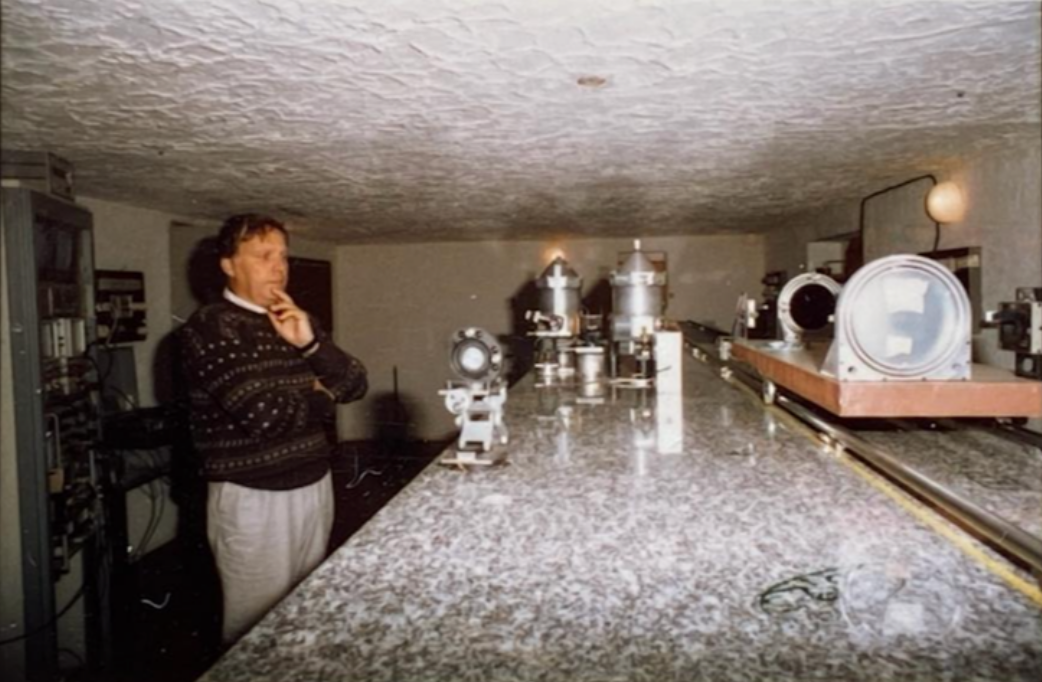Tribute to Jean Gay (1937-2024)
Published on 28 mai 2024
Text proposed by François Mignard, Yves Rabbia, William Danchi, Djamel Mékarnia, Farrokh Vakili, François-Xavier Schmider, Daniel Bonneau, Denis Mourard, Lyu Abe, Bertrand Chauvineau, Jean-Pierre Rivet, Benoît Mosser, Patrick Gaulme, Claude Aime, Jean-Philippe Berger, Marc Ollivier, Antoine Labeyrie, Philippe Stee, Fatmé Allouche, Pierre Cruzalèbes, Romain Petrov, Pierre Antonelli, Vincent Coudé du Foresto, Pierre Baudoz, Sylvie Robbe-Dubois, Bruno Lopez, Guy Perrin … and many others.
Our colleague Jean Gay left us on May 20, 2024. He was surrounded until his last hours by his wife Marie Christine and his four children.
Jean was born in 1937 in the Paris region and was trained in physics and astronomy at the Sorbonne, with André Danjon as his teacher. He was recruited into the corps of astronomers at the Observatory of Meudon and obtaining his PhD under the direction of James Lequeux in the field of submillimeter radioastronomy and heterodyne techniques. At the beginning of the 1970s, Jean Gay carried out experiments at the Meudon Observatory and then at the Haute-Provence Observatory aimed at mastering the heterodyne detection of an optical signal in the mid-infrared around 10 microns wavelength.
He joined the Plateau de Calern at CERGA (Centre d’Etude et de Recherche en Géodynamique et Astrophysique, now called simply Plateau or Observatoire de Calern, as part of the Observatoire de la Côte d’Azur) in 1973 to build SOIRDETE as part of an ensemble of prototype interferometers developed on the site.
He was a pioneer in the instrumental field of mid-infrared interferometry with SOIRDETE (Synthèse d'Ouverture en InfraRouge par DETection hETErodyne) which was the first mid-infrared interferometer operating in direct detection. SOIRDETE was an acronym illustrating his love of the written word: SOIRDETE in French means summer evening. Some of you might have noticed that this game with acronyms had continued with the designers of MIDI (first mid-infrared generation interferometric instrument for the VLTI, PI Christophe Leinert, MPIA) which in French means Midday. SOIRDETE has greatly served the astrophysical community.
By demonstrating the feasibility of direct interferometry in the mid-infrared, an impulse was given for creating the first mid-infrared interferometer operating as a facility at the VLTI, an objective that MIDI had perfectly accomplished during 15 years, and still continues to serve the community thanks to its archived data which continues to be presently exploited. Also, Jean Gay was a group leader contributing to the design the first prototype Fringe Tracker for the VLTI that was called FINITO.
Jean Gay has created the “CIA” to enquiry around the suspected planets wandering in the rich environment of stars. The CIA was the very first interferential coronographic experiment which has transformed the instrumental research field of stellar coronography methods, overpassing the performance of the basic Lyot mask approach. The “Coronographie Interferentielle Achromatique” was invented by Jean in 1995 and published in 1996. Jean was gifted to manipulate complex equations involved in the interferential coronographic methods. He developed the formalism both for the “Coronographie Interferentielle Achromatique” involving the Pi phase shift at the focus of one of the intermediate interferometric arm and for the four quadrant coronographic approach as well. His impressive talent for presenting a reasoning, or telling the physics through equations and the French language, was exquisite, it greatly served the coronographic research and all fields he worked in.
Jean Gay was deeply involved in the seismology of giant planets, Jupiter and Saturn. He first used the Fourier Transform Spectrometer (FTS) at the CFH Telescope in Hawaii to observe Jupiter, for which he suggests a special configuration of the instrument. Then, he developed a concept for an imaging spectrometer based on a interferometer able to provide images of the small displacements at the surface of the planet. His concept was at the origin of several further projects, both for space missions and a ground-based network.
He invented a popular device called the Solarscope. He was passionate about observation and optics, he became enthusiastic about the passages of Venus in 2004 and 2012 and patented the Solarscope, a simplified optical instrument with a mount made of cardboard intended for observing the projected image of the Sun avoiding all the dangers linked to observing the Sun.
Those who knew Jean Gay keep the memory of a lively intelligence and brilliant as well as tireless and abundant creativity. He was a lovely person, positively influencing many students and researchers. He stimulated several of us, Jean played an essential role in inspiring and forming many French scientists for interferometry. He was chairing the science council of OCA in late 1990’s.
Through his gentlemanly attitude, he was a person who always played in a collective team spirit, an important quality to help young scientists to gain confidence. In fact, his enthusiasm provoked collective work, because he proposed more ideas than he could carry out himself: it was up to his collaborators to filter his ideas and draw from them the best, Jean was always in front developing another idea, enriching the explanations, or taking a step aside to elegantly explain a concept that took time to understand. He also knew how to free himself from the too formal aspect of administrative procedures!

Figure 1: A familiar attitude Jean often had as a “penseur” with his overflowing inspiration.
